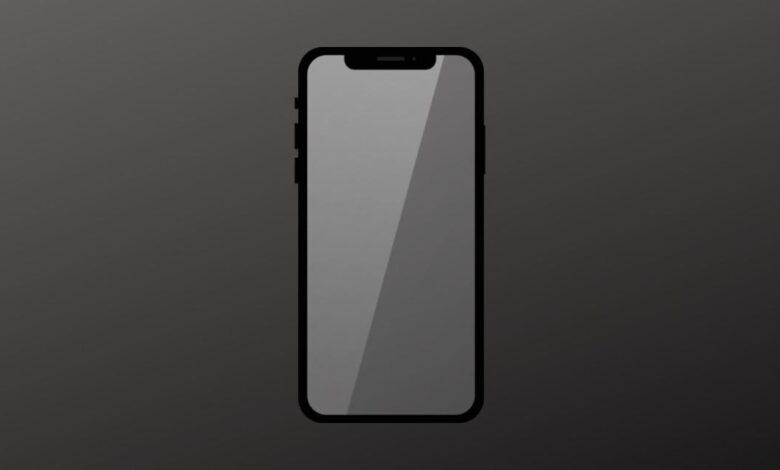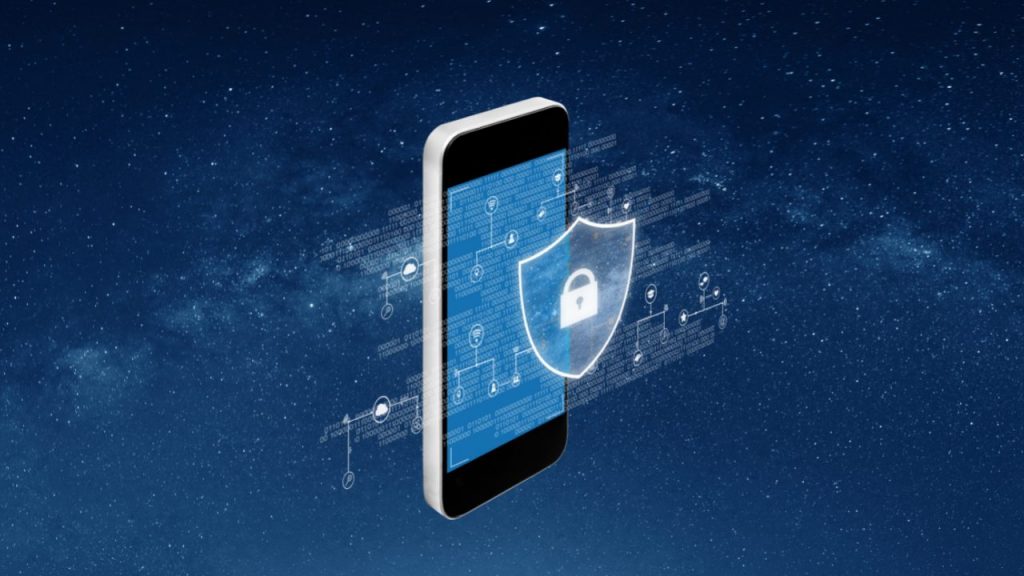
Security Myths of Smart Phones Debunked
Security myths of smart phones debunked – Security myths of smart phones debunked! We all rely on our smartphones for everything these days, but how much do we
-really* know about keeping them safe? This post dives deep into the common misconceptions surrounding smartphone security, exposing the truth behind those seemingly impenetrable defenses. From biometric authentication to public Wi-Fi risks, we’ll uncover the vulnerabilities and arm you with the knowledge to protect your digital life.
Get ready to challenge your assumptions about smartphone security. We’ll explore the limitations of fingerprint and facial recognition, the dangers of weak passwords and app permissions, and the crucial role of software updates. We’ll also tackle the often-overlooked areas like physical security, cloud storage, and the ever-present threat of phishing and malware. By the end, you’ll have a clearer picture of the real risks and how to effectively mitigate them.
Biometric Security Myths

Biometric authentication, using unique physical traits like fingerprints or facial features, is increasingly common on smartphones. While offering a convenient alternative to passwords, it’s crucial to understand its limitations and potential vulnerabilities. The perception of impenetrable security surrounding these technologies is often misleading, and a realistic assessment is necessary to understand the true risks involved.
Many believe that biometric security is inherently more secure than traditional password-based systems. However, this isn’t always the case. The effectiveness of biometric authentication hinges on the quality of the technology, the security of the data storage, and the robustness of the system against various attack vectors. This section will delve into the weaknesses and potential exploits of fingerprint and facial recognition, highlighting the importance of a balanced approach to mobile security.
Fingerprint Recognition Limitations
Fingerprint scanners, while convenient, are susceptible to spoofing. High-resolution images of a fingerprint, obtained through various methods (e.g., lifting a print from a surface, using a molded replica), can sometimes fool even advanced sensors. Furthermore, the sensor’s accuracy can degrade over time, potentially leading to false positives or negatives. The quality of the fingerprint image itself also plays a significant role; smudged or damaged prints can be difficult for the scanner to accurately read, leading to authentication failures.
Moreover, a compromised fingerprint database would expose a user’s biometric data, making them vulnerable to identity theft. Consider the case of a large-scale data breach affecting a fingerprint database used by a major smartphone manufacturer – the implications for millions of users would be severe.
Facial Recognition Vulnerabilities, Security myths of smart phones debunked
Facial recognition technology, while rapidly advancing, also faces significant vulnerabilities. Sophisticated spoofing techniques, such as using a high-quality photograph or video of the user’s face, can bypass security measures. Lighting conditions, facial expressions, and even the presence of accessories like glasses or hats can impact the accuracy of facial recognition systems. Moreover, the data stored for facial recognition is often more complex and sensitive than fingerprint data, increasing the potential damage from a data breach.
For example, if a database containing facial recognition data is compromised, deepfakes could be created, potentially leading to identity theft, financial fraud, or even blackmail.
Biometric Data Storage and Breach Consequences
The security of biometric data storage is paramount. If this data is compromised, the consequences can be severe and long-lasting. Unlike passwords, which can be changed, biometric data is immutable. A breach means the stolen data can be used indefinitely for malicious purposes. The consequences range from identity theft and financial fraud to unauthorized access to sensitive information and even physical harm.
Consider the impact of a breach affecting a government database storing biometric data for national ID cards – the implications for national security and individual safety would be substantial.
Comparison of Biometric Authentication Methods
| Authentication Method | Strengths | Weaknesses | Vulnerabilities |
|---|---|---|---|
| Fingerprint | Convenient, relatively fast, widely available. | Susceptible to spoofing, vulnerable to wear and tear. | Spoofing with high-quality images or molds, database breaches. |
| Facial Recognition | Contactless, potentially more secure than fingerprint. | Sensitive to lighting and environmental conditions, vulnerable to spoofing. | Spoofing with photos or videos, database breaches, potential for deepfake creation. |
| Iris Scan | Highly accurate, difficult to spoof. | Less widely available, can be slower and more inconvenient. | Database breaches, potential for high-resolution image capture. |
Password and PIN Security Myths
Smartphones hold a treasure trove of personal data, making robust security paramount. While biometric authentication offers a convenient layer of protection, passwords and PINs remain fundamental. Understanding the realities of their security is crucial to mitigating risks. Many common beliefs about password and PIN security are misleading, leading to vulnerabilities that can be easily exploited.Password complexity versus PIN length is a frequent debate.
The belief that a complex password (e.g., “P@$$wOrd123!”) is inherently more secure than a simple PIN (e.g., “1234”) is partially true, but oversimplified. While a complex password resists dictionary attacks (attempts to guess common words and phrases), a short PIN is incredibly vulnerable to brute-force attacks, where an attacker tries every possible combination. A four-digit PIN has only 10,000 possible combinations, easily crackable with modern technology.
A longer PIN, or a complex password with sufficient length and randomness, significantly increases the difficulty of a brute-force attack.
Password Reuse Risks
Reusing passwords across multiple accounts is a catastrophic security risk. If one account is compromised, the attacker gains access to all accounts using the same password. This is especially dangerous if the compromised account is linked to your smartphone, giving the attacker access to your contacts, photos, emails, and potentially even banking apps. A successful breach on one platform, such as a social media site, can become a gateway to your entire digital life if you’ve used the same password for your phone and other sensitive accounts.
So, you’ve busted those pesky smartphone security myths – good job! But secure data needs secure apps, too, which is why understanding the future of app development is crucial. Check out this article on domino app dev, the low-code and pro-code future , to see how robust app development can bolster your overall phone security. Ultimately, strong app security is just as vital as understanding those common smartphone security misconceptions.
For instance, if a hacker obtains your email password, they might attempt to reset your smartphone’s password or access accounts linked to that email.
Best Practices for Password Management
Creating strong, unique passwords is essential for robust smartphone security. This involves using a combination of uppercase and lowercase letters, numbers, and symbols, aiming for a minimum length of 12 characters. However, remembering dozens of unique, complex passwords is nearly impossible. Therefore, utilizing a reputable password manager is highly recommended. Password managers generate strong, unique passwords for each account and securely store them, encrypted, within the application.
Choosing a reputable, well-established password manager with strong encryption protocols and a proven track record is crucial. Think of it as a digital vault for your digital keys, keeping them secure and organized. Regularly updating the password manager’s master password, and enabling two-factor authentication where possible, further enhances security. Consider using a passphrase—a memorable phrase rather than a random string of characters—as your master password.
For example, instead of “P@$$wOrd123!”, use “MyDogIsCalledRover123!”. This is much easier to remember but still quite strong.
App Permissions and Privacy Myths
We often grant apps access to our personal data without fully understanding the implications. This seemingly harmless act can expose us to significant privacy risks. Many believe that only “sensitive” apps like banking apps require careful permission scrutiny, but the reality is far more nuanced. Even seemingly innocuous games or utilities can collect and use data in ways that might surprise you.Many users assume that requesting permission implies the app will only use that data for its stated purpose.
However, this is often not the case. Apps may collect far more data than is necessary, and this data can be used in ways not explicitly stated in their privacy policies. Furthermore, the aggregation of seemingly insignificant data points from multiple apps can create a surprisingly detailed profile of an individual’s life.
Potentially Harmful App Permissions and Risk Mitigation
Understanding which permissions are potentially risky is crucial for protecting your privacy. Granting unnecessary permissions increases your vulnerability to data breaches, identity theft, and unwanted tracking. It’s vital to carefully review the permissions requested by each app before installation and regularly review the permissions already granted to apps you use.
- Location Access: While location services are useful for navigation and location-based services, constantly sharing your precise location with every app can be a major privacy risk. Mitigation: Use the “While Using the App” option instead of “Always” whenever possible. For apps that genuinely need continuous location data, consider if you truly need that app.
- Camera Access: Apps requesting camera access might be used for legitimate purposes like taking photos or scanning documents. However, malicious apps could secretly record you without your knowledge. Mitigation: Only grant camera access to trusted apps and carefully review the app’s description to ensure the camera access is truly necessary.
- Microphone Access: Similar to camera access, microphone access can be used for voice recording or voice commands. However, malicious apps could listen in on your conversations. Mitigation: Grant microphone access only to apps that explicitly require it for their core functionality, and be wary of apps that require microphone access for seemingly unrelated tasks.
- Contacts Access: Access to your contact list allows apps to build a profile of your social connections. This data could be used for targeted advertising or even identity theft. Mitigation: Avoid granting contact access unless absolutely necessary. Check the app’s privacy policy to see how it intends to use this information.
- Storage Access: This permission allows apps to access files and data stored on your device. Malicious apps could use this access to steal sensitive information, such as passwords or financial details. Mitigation: Grant storage access only to trusted apps and be cautious about granting full access.
Data Collection by Seemingly Harmless Apps
Even apps that appear harmless can collect and use surprising amounts of user data. For example, a free game might collect your gameplay data, which could then be sold to advertisers to build a profile of your interests and preferences. Similarly, a weather app might collect your location data, even when you’re not actively using the app’s location features.
This data, combined with data from other apps, can paint a comprehensive picture of your life and habits.
The seemingly innocuous act of downloading a free app often comes with a cost: your data.
Consider the example of a flashlight app. While its primary function is simple, many such apps request additional permissions, such as access to your contacts or location. These permissions are often unnecessary for the app’s core functionality and serve to collect data that can be monetized. This highlights the importance of carefully examining the permissions requested by every app, regardless of its perceived purpose.
Public Wi-Fi Security Myths
Public Wi-Fi networks, while convenient, present significant security risks for smartphone users. The seemingly free and readily available internet access often comes at the cost of your privacy and data security. Many believe that public Wi-Fi is safe for casual browsing, but this is a dangerous misconception. Understanding the vulnerabilities and implementing appropriate security measures is crucial to protecting your sensitive information.
Dangers of Using Public Wi-Fi for Sensitive Activities
Using public Wi-Fi for sensitive activities like online banking, accessing email accounts, or making online purchases exposes your data to various attacks. Unsecured networks lack encryption, meaning your internet traffic can be intercepted and monitored by malicious actors. These individuals could be sophisticated hackers or simply opportunistic eavesdroppers using readily available tools. Examples of attacks include man-in-the-middle attacks, where hackers intercept and modify your communication, potentially stealing login credentials or credit card information.
Another risk is session hijacking, where a hacker takes control of your established connection, allowing them access to your online accounts and data. Even seemingly harmless activities like checking social media can expose you to data breaches if the network is compromised.
Security Measures for Public Wi-Fi Usage
Protecting your data on public Wi-Fi requires a multi-layered approach. The most effective measure is using a Virtual Private Network (VPN). A VPN encrypts your internet traffic, creating a secure tunnel between your device and the VPN server, making it much harder for others to intercept your data. Avoid conducting sensitive transactions on public Wi-Fi whenever possible. If you must use public Wi-Fi for such activities, ensure you’re using a trusted and secure website (look for “https” in the URL).
Regularly update your smartphone’s operating system and apps to patch security vulnerabilities. Be mindful of the Wi-Fi networks you connect to – avoid networks with generic names or those that don’t require a password. Finally, turn off your Wi-Fi and Bluetooth when not in use to prevent unwanted connections.
Methods for Securing Smartphone Connections on Public Wi-Fi
| Method | Effectiveness | Ease of Use | Additional Notes |
|---|---|---|---|
| VPN | High | Medium (requires app installation and subscription) | Offers strong encryption and masks your IP address. Choose a reputable VPN provider. |
| Avoid Sensitive Activities | High (for specific activities) | High | Best practice for minimizing risk; not a substitute for other security measures. |
| HTTPS Websites | Medium | High | Ensures encrypted communication between your browser and the website; only protects the specific connection. |
| Regular Software Updates | Medium | Medium (requires user action) | Patches security vulnerabilities that could be exploited on insecure networks. |
Software Updates and Security Patches Myths: Security Myths Of Smart Phones Debunked
Many believe that skipping software updates is a harmless way to save time or data, but this couldn’t be further from the truth. Regularly updating your smartphone’s operating system and apps is crucial for maintaining its security and overall functionality. Ignoring these updates leaves your device vulnerable to a range of threats, potentially leading to significant consequences.Software updates aren’t just about adding new features; they’re primarily about patching security vulnerabilities.
These vulnerabilities are weaknesses in the software’s code that malicious actors can exploit to gain unauthorized access to your device and data. These exploits can range from stealing personal information to installing malware that can completely compromise your phone.
Security Vulnerabilities Addressed Through Updates
Software updates consistently address a wide array of security flaws. For instance, a common vulnerability is a buffer overflow, where an application attempts to write data beyond the allocated memory space. This can lead to a crash or allow malicious code execution. Another example is a SQL injection vulnerability, which allows attackers to inject malicious SQL code into database queries, potentially giving them access to sensitive data.
Regular updates patch these flaws, preventing attackers from exploiting them. The Stagefright vulnerability in Android, for example, allowed attackers to remotely execute code on vulnerable devices simply by sending a specially crafted multimedia message. This was patched through subsequent OS updates.
Consequences of Delaying or Neglecting Updates
Delaying or neglecting software updates exposes your smartphone to various risks. One significant risk is malware infection. Outdated software is more susceptible to malware attacks, as attackers often target known vulnerabilities in older versions. This malware can steal your personal information, such as passwords, banking details, and contact lists. It can also track your location, monitor your activity, and even remotely control your device.
Beyond malware, neglecting updates leaves your device open to other forms of attack, including phishing scams, data breaches, and denial-of-service attacks. These attacks can result in financial loss, identity theft, and significant privacy violations. In some cases, neglecting updates can even lead to a complete loss of data or the need for a factory reset, potentially causing a significant disruption to your daily life.
The 2017 Equifax data breach, for instance, highlighted the severe consequences of failing to patch known vulnerabilities in a timely manner, resulting in the exposure of sensitive personal information for millions of individuals.
Physical Security Myths
Losing your smartphone is more than just an inconvenience; it’s a significant security risk. Many believe that simply having a passcode is enough to protect their data, but the reality is far more complex. Physical security is the first line of defense against data breaches, and understanding the vulnerabilities is crucial to mitigating them.Physical theft exposes your device to unauthorized access, potentially leading to identity theft, financial loss, and the compromise of sensitive personal information.
Beyond theft, simply losing your phone, even temporarily, creates opportunities for data exposure if it falls into the wrong hands. This section explores the realities of physical security risks and the proactive measures you can take.
Risks Associated with Lost or Stolen Smartphones
The consequences of a lost or stolen smartphone can be severe. Criminals can access your personal data, including banking details, emails, photos, and contact information, leading to financial fraud, identity theft, and reputational damage. Furthermore, depending on the apps you use, access could be gained to sensitive work information or even personal health records. The potential damage extends beyond financial and personal implications; access to your social media accounts could lead to social engineering attacks targeting your contacts.
A stolen phone can also be used to make fraudulent purchases or sign up for services in your name.
Securing Your Smartphone Physically
Proactive measures are key to mitigating the risks of losing or having your phone stolen. Implementing a multi-layered approach significantly improves your security posture. This includes using strong screen locks, such as a complex password or biometric authentication (with awareness of its limitations, discussed previously), and employing device tracking and remote wipe capabilities.A strong password or PIN should be used, and biometric authentication can add an extra layer of security, though remember that biometric data itself can be compromised.
Consider enabling a device tracking feature, such as Apple’s Find My or Google’s Find My Device. These services allow you to locate your phone on a map, remotely lock it, or erase all data if necessary. A robust screen lock, combined with remote wipe functionality, significantly reduces the chances of data compromise. Consider also utilizing a physical security measure like a phone case with a secure pocket or a phone tether to help prevent loss or theft.
Securing a Lost or Stolen Smartphone: A Step-by-Step Guide
Following a loss or theft, immediate action is critical to minimizing potential damage. Here’s a step-by-step guide:
- Report the loss or theft: Immediately contact your mobile carrier to suspend your service and prevent unauthorized use. This prevents fraudulent charges and helps limit the potential for misuse. File a police report, as this may be necessary for insurance claims or investigations.
- Locate and secure your device: Use your device tracking app (if enabled) to locate your phone. If possible, remotely lock it to prevent access to your data. If the phone is irretrievable, remotely wipe all data to prevent unauthorized access to your information.
- Change your passwords: After reporting the loss and initiating a remote wipe, change all passwords associated with accounts accessed on your phone, including banking, email, social media, and any other sensitive services. Utilize unique and strong passwords for each account.
- Contact relevant institutions: Inform your bank, credit card companies, and other financial institutions about the theft. This helps prevent fraudulent transactions and protects your financial accounts. If you suspect identity theft, contact the appropriate credit bureaus and fraud prevention services.
- Monitor your accounts: Regularly check your bank statements, credit reports, and online accounts for any unauthorized activity. Be vigilant in monitoring for suspicious transactions or login attempts.
Cloud Storage and Backup Myths

We all rely on cloud storage for backups these days, but the convenience often overshadows important security considerations. Many misconceptions surround the security of cloud storage, particularly concerning smartphone backups. Understanding these myths is crucial for protecting your sensitive data.Cloud storage, while offering incredible convenience, introduces a new layer of security challenges. The responsibility for data protection is shared between the user and the cloud provider.
Users need to understand the security features offered by their chosen provider and take proactive steps to secure their accounts. The perceived invulnerability of cloud services is a dangerous myth. Data breaches, though rare, do occur, highlighting the need for robust security practices.
Security Implications of Storing Sensitive Data in the Cloud
Storing sensitive data like financial information, medical records, or personal photos in cloud storage carries inherent risks. Data breaches at the provider level can expose this information, leading to identity theft, financial loss, or other serious consequences. Even with strong encryption, the possibility of unauthorized access remains. The location of data centers also plays a role, as differing legal jurisdictions may impact data privacy and accessibility in the event of a legal dispute or investigation.
Therefore, careful consideration of the sensitivity of data before uploading it is paramount.
Comparison of Cloud Storage Providers’ Security Features
Different cloud storage providers offer varying levels of security. Some providers, like Google Drive and Dropbox, use robust encryption methods both in transit and at rest, meaning your data is protected both while it’s being transferred and while it’s stored on their servers. However, even with these features, the level of security depends on the user’s choices, such as strong passwords and two-factor authentication.
Others might offer less robust encryption or have less transparent security practices. It’s essential to research and compare the security features of different providers before choosing one for storing sensitive smartphone backups. For example, a comparison might reveal that Provider A uses end-to-end encryption while Provider B only encrypts data at rest, a significant difference in security.
Best Practices for Securing Cloud Storage Accounts Used for Smartphone Backups
Before listing best practices, it’s important to remember that no system is perfectly secure. The goal is to mitigate risk and minimize vulnerabilities. Implementing these best practices significantly reduces the likelihood of a successful attack.
- Use Strong and Unique Passwords: Avoid easily guessable passwords and use a password manager to generate and store complex, unique passwords for each account.
- Enable Two-Factor Authentication (2FA): This adds an extra layer of security, requiring a second form of verification beyond your password, such as a code sent to your phone or email.
- Regularly Review Account Permissions: Check and revoke access for any apps or devices you no longer trust or use.
- Choose Providers with Robust Encryption: Opt for providers that offer both in-transit and at-rest encryption to protect your data at all times.
- Keep Software Updated: Ensure your smartphone’s operating system and the cloud storage app are up-to-date with the latest security patches.
- Monitor Account Activity: Regularly check your account for any suspicious login attempts or unauthorized activity.
- Understand Your Provider’s Privacy Policy: Familiarize yourself with your provider’s data handling practices and security measures.
Phishing and Malware Myths
Smartphones are incredibly powerful tools, but their connectivity also makes them vulnerable to phishing attacks and malware. These threats can compromise your personal data, financial information, and even your device’s functionality, leading to significant frustration and potential financial loss. Understanding how these attacks work and taking preventative measures is crucial for maintaining your smartphone’s security.Phishing attacks and malware exploit various weaknesses in smartphone security to gain unauthorized access or control.
Phishing leverages social engineering techniques to trick users into revealing sensitive information, such as usernames, passwords, and credit card details. Malware, on the other hand, is malicious software designed to damage, disrupt, or gain unauthorized access to a system. Both threats can work independently or in tandem to compromise your device. For example, a phishing email might contain a link to a malicious website that downloads malware onto your phone.
Common Phishing Techniques
Phishing attempts often mimic legitimate communications from banks, social media platforms, or other trusted sources. They may arrive via email, text message (SMS), or even through in-app notifications. These deceptive messages often create a sense of urgency, prompting immediate action from the recipient.Examples include emails claiming your account has been compromised and requiring you to click a link to verify your details, or text messages offering a prize or discount that requires you to provide personal information.
Another common tactic involves using spoofed phone numbers or email addresses that closely resemble those of legitimate organizations. These subtle differences are often difficult to spot, making them highly effective. Always carefully examine the sender’s details before clicking any links or providing personal information.
Responding to Malware Infection
If you suspect your smartphone has been infected with malware, immediate action is essential to limit the damage. The first step is to disconnect your phone from any networks, including Wi-Fi and mobile data. This prevents the malware from communicating with its command-and-control server and potentially spreading further.Next, you should power down your phone completely and then power it back on in safe mode.
Safe mode typically disables non-essential apps and services, including potentially malicious ones. From safe mode, uninstall any recently installed apps that you suspect might be the source of the infection. If the problem persists, consider performing a factory reset. This will erase all data on your device, but it’s often the most effective way to remove stubborn malware.
Remember to back up your important data beforehand if possible, although doing so may risk further infection. Finally, install a reputable antivirus app and run a full scan to detect and remove any remaining malware. Consider seeking professional help from a mobile device security expert if you’re unable to resolve the issue yourself.
Identifying and Avoiding Suspicious Links, Emails, and Text Messages
Several strategies can help you identify and avoid suspicious communications. Always be wary of unsolicited emails or text messages, especially those containing links or attachments. Check the sender’s email address or phone number carefully for any inconsistencies or typos. Legitimate organizations rarely use informal language or create a sense of urgency in their communications.Hovering your cursor over a link (on a computer) or long-pressing it (on a smartphone) will often reveal the actual URL, allowing you to check if it matches the expected domain.
Be cautious of links that are shortened or obfuscated, as these can mask malicious destinations. If you’re unsure about the legitimacy of a message, contact the organization directly using a verified phone number or email address found on their official website. Never click on links or open attachments from unknown or untrusted sources. Remember, when in doubt, it’s always best to err on the side of caution.
Ultimate Conclusion

So, there you have it – a closer look at the pervasive myths surrounding smartphone security. While technology constantly evolves, the core principles of strong passwords, cautious app usage, and vigilant awareness remain paramount. Remember, your digital well-being is in your hands. By understanding these common misconceptions and implementing the practical advice shared here, you can significantly improve your smartphone security and navigate the digital world with confidence.
Stay safe out there!
Answers to Common Questions
What if my fingerprint is compromised?
If your fingerprint is compromised, the attacker could potentially unlock your phone. Consider using a strong PIN or password as a secondary layer of security.
Are all VPNs equally secure?
No. Choose a reputable VPN with a strong track record and a clear privacy policy. Free VPNs often compromise security for profit.
How often should I update my apps?
Update your apps as soon as updates are available. These updates often include critical security patches.
What should I do if I think my phone is infected with malware?
Immediately disconnect from the internet, run a malware scan with a reputable app, and consider a factory reset if the infection persists. Change all your passwords afterwards.




